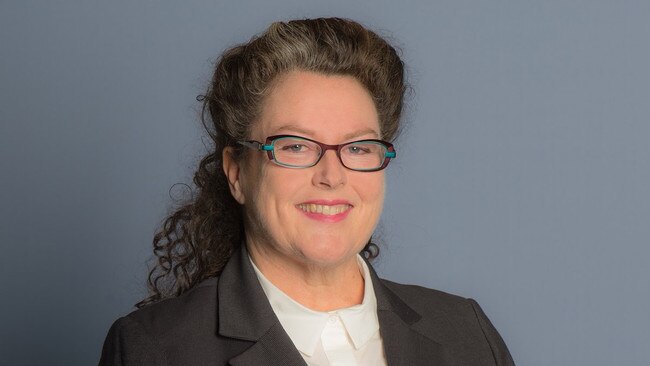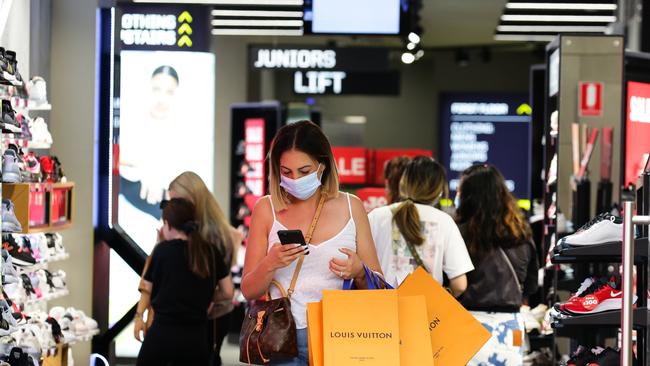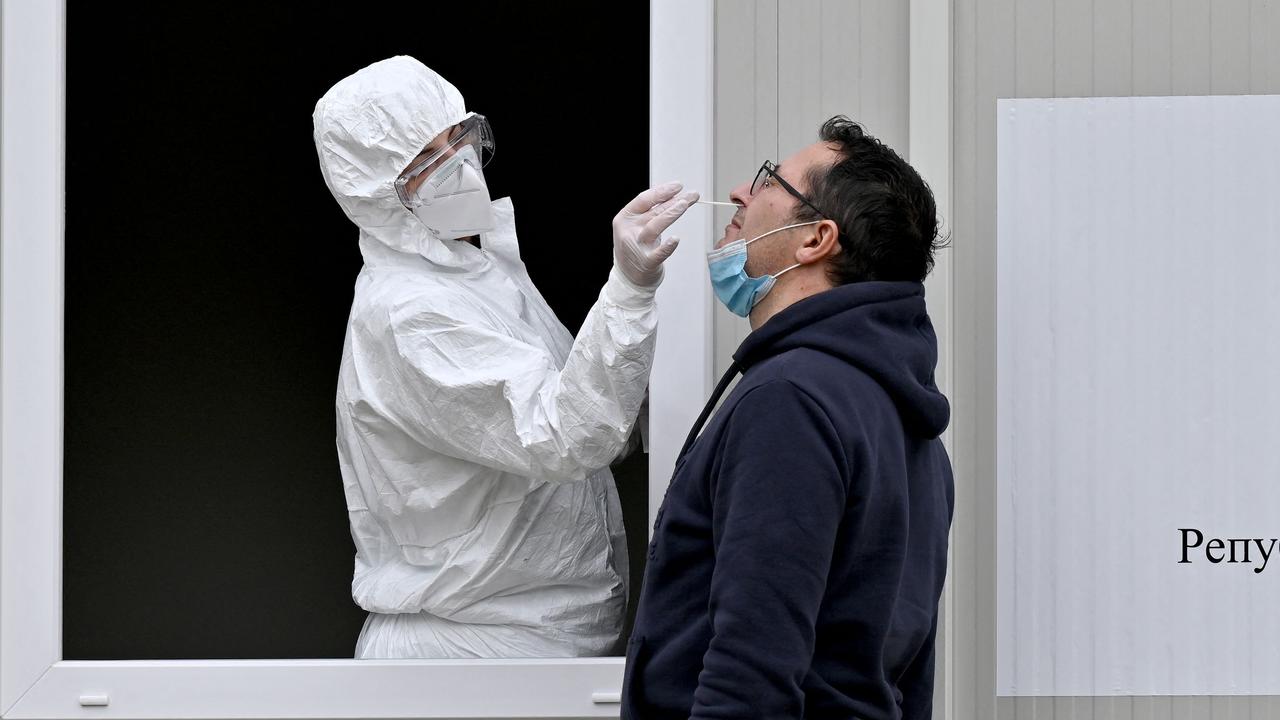Masks still needed even with high vaccination rates
Eighty per cent vaccination rates won’t mean total freedom – experts reveal what living with Covid really looks like.

Coronavirus
Don't miss out on the headlines from Coronavirus. Followed categories will be added to My News.
Australians will have to keep wearing masks indoors well into next year even when 80 per cent of the population is vaccinated, and air filters and rapid antigen tests will be standard practice.
Leading infectious diseases experts are warning vaccination alone won’t stop the spread of the Covid-19 virus because inoculated people can still get infected and pass the virus on to others.
The reason to get vaccinated is you are less likely to die or be hospitalised.
“Your chances of being infected in England were a third less if you had one dose of vaccination compared to an unvaccinated person,” Deakin University epidemiologist Professor Catherine Bennet said.
“Two thirds less if you had both doses,” she said, adding that the viral load of vaccinated people who still contract Covid-19 is just as high as in unvaccinated people “but your infectious periods probably shorter”.

Writing in the Public Health Research & Practice journal of the Sax Institute, Prof Bennett warned against any expectations of an immediate return to normal life once vaccination targets hit 70 per cent and then 80 per cent.
Masks indoors will be the last precaution to go and large gatherings are likely to be the last banned activity to return, she said.
But she said large events may happen sooner if we adopt vaccine passports.
Many people wrongly feared lifting restrictions would allow the virus to take off, others were mistaken in thinking they could go back to life as normal, she said.
“The truth lies somewhere in the middle.
“The virus is in the community, the COVID-19 transition has begun, and we are on track to live with the virus, but control the disease, from the first quarter of 2022,” she concludes.
In the new phase of pandemic control – instead of instant state or city wide lockdowns – only a few suburbs or a small town might have to close schools and restaurants for a week if there was an outbreak.
“You would stay at home if you’re infected but if there are other vaccinated people in the house they might still be able to continue to work as long as they tested negative,” Prof Bennett said.
Mask wearing would remain compulsory on public transport, in shared cars, indoor retail and other enclosed spaces, she said.
As we move into suppression mode, with higher rates of the population fully vaccinated, contact tracers will no longer need to find the source of every case.
NSW has already begun to transition to this phase with its testing system overloaded and returning results days late and contact tracers unable to keep up with tracking the 1,200 plus cases identified each day.
The aim is now to identify infected people, care for them and ensure those they live with or came into contact with are tested.
Rapid antigen testing which can produce results within 15 minutes is being trialled as a more useful way of identifying infections in this scenario.

However, Professor Bennett warned this type of testing was not cheap, needed to be repeated at least every three days and under government rules required nurse supervision unlike in the US and UK where people can do the tests themselves at home.
Health Minister Greg Hunt said on Monday he could not force the independent Therapeutic Goods Administration to approve these tests for home use.
A new group of leading Australian experts called OzSage is advising that carbon dioxide testing and high grade HEPA air filters will be necessary to contain the spread of the virus in schools, childcare centres, shopping centres, hospitals and other indoor spaces.
Indoor venues should use carbon dioxide meters to check the gas is at levels of less than 800 ppm. Humans breathe out the gas and it is one way of gauging whether there could be high levels of airborne virus particles in the air.
Using air purifying devices with a HEPA filter matched to the space could help reduce the amount of airborne virus in indoor spaces.




